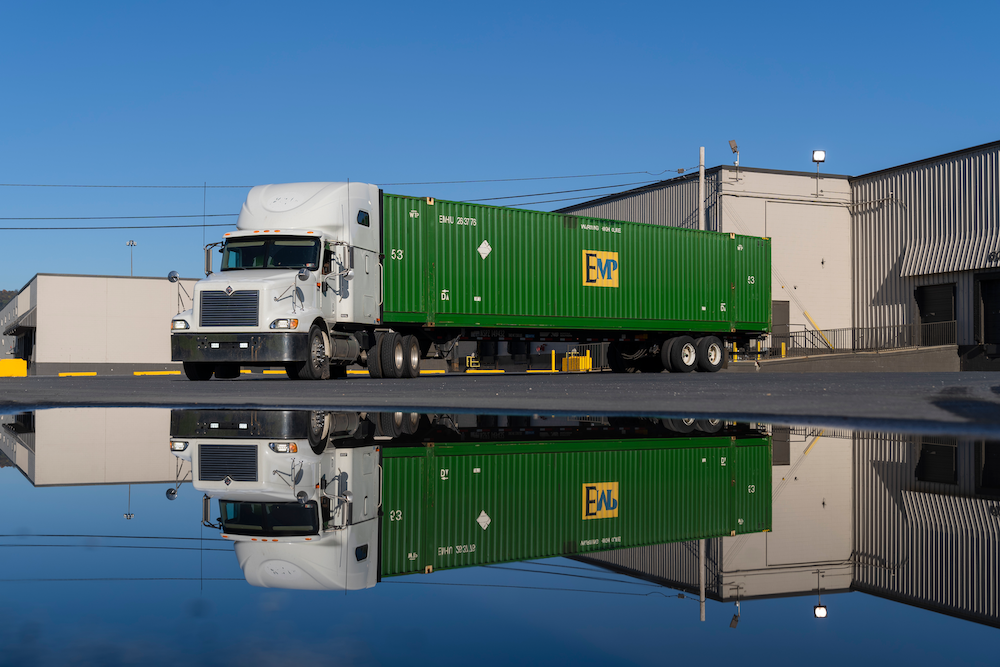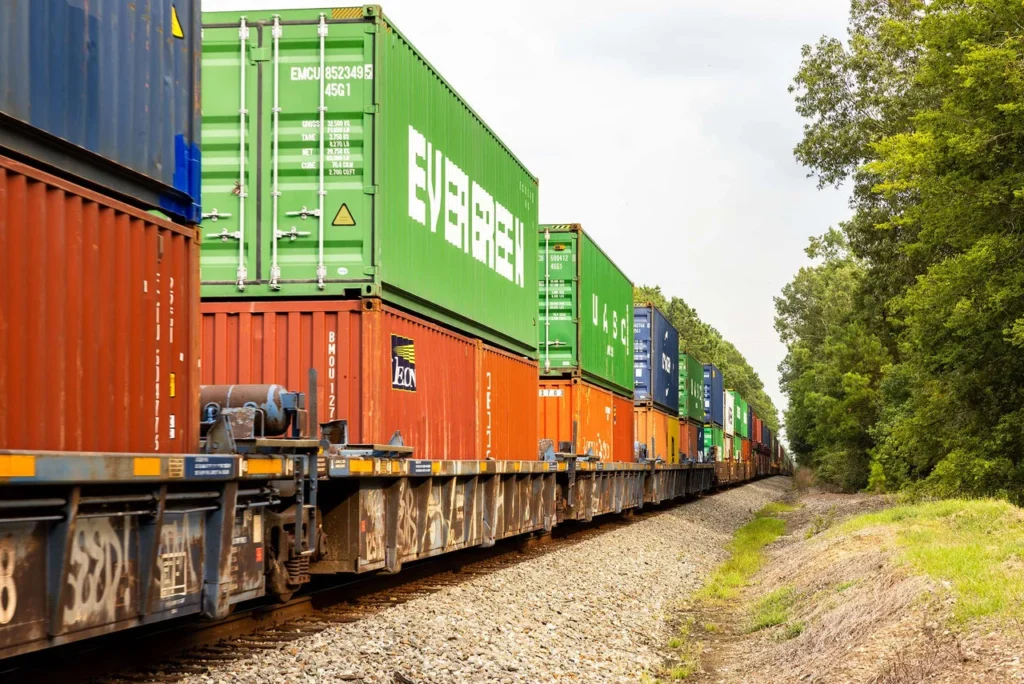Intermodal transportation is a vital part of the modern supply chain, combining multiple modes of transport—such as rail, road, and sometimes sea—for the seamless movement of goods. As businesses expand their operations across distances, selecting the right type of intermodal equipment becomes a necessity. With factors such as cost, capacity, and compatibility with existing fleet management systems at play, making an informed decision is essential for operational efficiency and profitability.
In this comprehensive guide, we’ll dive deep into the intricacies of intermodal equipment, offering strategies and considerations that will help you choose the best fit for your business. Let’s explore this fascinating topic together!
1. Understanding Intermodal Transportation
Before we delve into how to choose the right intermodal equipment, it’s important to grasp what intermodal transportation entails.
1.1 Definition of Intermodal Transportation
Intermodal transportation is a method of moving goods where two or more modes of transport are utilized in a single journey. This could involve using a truck to transport goods to a train station, after which they are loaded onto a freight train and transported to another train station before being delivered to the final destination via truck again.
1.2 Benefits of Intermodal Transportation
- Cost Efficiency: It often offers lower transportation costs than using a single mode of transport.
- Environmental Impact: It can lower carbon emissions due to the efficiency of trains over long distances.
- Flexibility: Businesses can choose the best combination of transport modes based on cost, time, and the nature of goods.
Understanding these benefits can provide valuable insight into how intermodal equipment can streamline your logistics operations.
2. Types of Intermodal Equipment
The intermodal transportation system relies on various types of equipment. Below are the main categories, along with their features, advantages, and suitable applications.
2.1 Intermodal Containers
Definition
Intermodal containers are standardized steel boxes that can be easily transferred between different modes of transportation without unpacking the contents. Common container types are 20’, 40’, and 45’ dry containers, refrigerated containers (reefer), and tank containers.
Advantages
- Standardization: Facilitates movement across different transportation systems.
- Durability: Made to withstand harsh conditions.
- Versatility: Suitable for a range of goods, including perishables, liquids, and general cargo.
Best Use Cases
Intermodal containers are ideal for large volumes of goods that can benefit from bulk transport and need to be kept secure throughout the shipping process.
2.2 Chassis
Definition
A chassis is a wheeled frame that supports an intermodal container and allows it to be transported by road. Chassis come in various styles, including standard, dual-axle, and tri-axle.
Advantages
- Mobility: Makes containers roadworthy without unloading.
- Compatibility: Available in various designs to match container sizes and weights.
Best Use Cases
Chassis are primarily used for transporting containers between ports, rail terminals, and warehouses.
2.3 Flatbeds
Definition
Flatbeds are trailers designed to transport goods that do not require the protection of a container. They’re typically used for large, heavy, or oversized items.
Advantages
- Access: Allows for quicker loading and unloading.
- Versatility: Can transport a variety of goods that are not containerized.
Best Use Cases
Ideal for heavy machinery, building materials, and other large items that can be secured to the flatbed.
3. Evaluating Your Business Needs
Choosing the right intermodal equipment begins with a thorough evaluation of your business needs and logistics operations. Here are critical points to consider:
3.1 Analyze Your Cargo Type
Understanding the type of cargo you intend to transport is fundamental. Different types of goods require different modes of handling.
- Dry Goods: May only need standard containers.
- Refrigerated Goods: Require reefer containers to maintain temperature.
- Bulk Liquids: May necessitate tank containers.
Consider how the nature of your cargo affects the choice of equipment.
3.2 Volume and Frequency of Shipments
Your shipping volume and frequency will also dictate the type of equipment required. Businesses with large and frequent shipments may need specialized equipment.
- High Volume: May benefit from dedicated trailers or containers to meet shipping demands.
- Low Volume: Smaller companies may find leasing equipment more economically viable.
3.3 Route Analysis
Examine the routes where your cargo will be transported, considering the distance, terrain, and climate conditions. This affects both the type of transport mode and the intermodal equipment utilized.
- Distance: Longer distances may favor rail transport.
- Terrain: Areas with poor road infrastructure may require different equipment.
3.4 Budget Constraints
Balancing between efficiency and cost is crucial. Understand your budget limitations for acquiring or leasing intermodal equipment.
- Consider total costs, including maintenance, storage, and operational expenses.
- Research financing options, including leasing versus buying.
4. Compliance and Regulations
When selecting intermodal equipment, it’s crucial to comply with local, national, and international regulations related to transport and cargo handling.
4.1 Local and National Regulations
- Weight Limits: Make sure your equipment complies with regulations on weight limits for road transport.
- Height and Width Restrictions: Address any local restrictions on vehicle dimensions.
4.2 International Regulations
If you’re shipping across borders, be aware of international regulations such as:
- Customs Regulations: Must ensure correct documentation.
- Cultural Differences: Different regions may have varying safety standards.
Understanding compliance ensures that your operations run smoothly and avoid costly fines or delays.
5. Choosing Between Buying or Leasing Equipment
An important decision faced by many businesses is whether to buy or lease their intermodal equipment. Each option comes with its advantages and disadvantages.
5.1 Pros and Cons of Buying Equipment
Pros:
- Asset Ownership: You can customize and maintain your equipment as needed.
- No Leasing Costs: Eliminates ongoing lease payments after purchase.
Cons:
- High Initial Investment: Significant upfront costs can strain budgets.
- Depreciation: Equipment may lose value over time, affecting asset worth.
5.2 Pros and Cons of Leasing Equipment
Pros:
- Lower Initial Costs: Frees up capital for other investments.
- Flexibility: Easy to upgrade to newer equipment as business needs change.
Cons:
- Ongoing Costs: Regular lease payments can add up over time.
- Limited Control: Less flexibility in customization and maintenance.
Consider both options carefully based on your company’s growth trajectory and financial position.
6. Building Relationships with Vendors and Suppliers
Establishing good relationships with equipment vendors can be beneficial. A reliable supplier can provide you with high-quality equipment as well as after-sale support.
6.1 Research Potential Suppliers
Look for suppliers with a good reputation, proven industry experience, and customer testimonials. Investigate:
- Equipment Quality: Check for durability and maintenance history.
- Availability of Parts: Ensure the supplier has good access to replacement parts.
6.2 Ask About Additional Services
Many suppliers offer additional services that can be valuable to your business.
- Maintenance Services: Some suppliers provide maintenance, making it easier to keep your equipment in optimal shape.
- Leasing Options: This flexibility can be useful depending on your business’s need.
6.3 Establish Expectations
Clearly communicate your expectations, timelines, and budget with potential suppliers. This will help ensure aligned goals as you build the relationship.
7. Using Technology for Decision Making
In today’s tech-driven environment, leveraging technology can enhance your decision-making process regarding intermodal equipment.
7.1 Data Analytics
Utilizing data analytics can provide insights into your shipping operations.
- Performance Metrics: Monitoring key performance indicators (KPIs) such as shipping times, costs, and equipment utilization can inform purchasing or leasing decisions.
- Predictive Analytics: Forecasting future shipping volumes can help you scale your intermodal equipment accordingly.
7.2 Fleet Management Software
Investing in fleet management software allows for improved tracking and management of your intermodal transportation process.
- Inventory Management: Helps you keep track of your equipment, cargo, and locations in real-time.
- Maintenance Scheduling: A prevention plan can be created and managed for your equipment, reducing downtime.
7.3 Internet of Things (IoT)
IoT devices can be used for real-time tracking and monitoring of your intermodal equipment.
- Condition Monitoring: Sensor technologies can alert you to maintenance needs or potential issues.
- Location Tracking: GPS services enable constant updates on your shipments.
Leveraging these technologies not only aids in decision-making but also enhances operational efficiency and visibility.
8. Sustainability Considerations
Sustainability is increasingly becoming a critical factor in logistics and intermodal transport. Consumers are more conscious of their environmental impact, making it essential for businesses to adopt sustainable practices.
8.1 Selecting Eco-Friendly Equipment
When choosing intermodal equipment, look for options that have sustainable features.
- Recyclable Materials: Some containers are made from recyclable materials, reducing landfill contributions.
- Fuel Efficiency: Equipment that contributes to lower fuel consumption can significantly reduce overall carbon footprints.
8.2 Sustainable Supply Chain Practices
Evaluate the sustainability of your entire supply chain relationship with vendors.
- Vendor Sustainability: Collaborate with suppliers who have sustainable business practices.
- Green Certifications: Seek out intermodal carriers that prioritize sustainability and have received appropriate certifications.
Adopting environmentally friendly practices will not only help meet regulatory requirements but also improve your brand image among consumers.
9. Case Studies
9.1 Successful Intermodal Implementation
Company X: A leading e-commerce business wanted to optimize its logistics operations. They identified the need to reduce transit times and costs.
After a comprehensive evaluation, they implemented a mixed approach using rail transport for long-distance shipments and trucks for local delivery. They wisely invested in both options: purchasing certain equipment and leasing others. This allowed for flexibility in operations while maximizing cost efficiency.
Outcome: This approach helped reduce transit costs by 20% and improved delivery times. Intermodal Container benefits
9.2 Challenges in Intermodal Transportation
Company Y: A manufacturer faced challenges with damaged goods during transportation. They relied heavily on flatbeds and lacked appropriate weatherproofing measures.
Upon analysis, they switched to intermodal containers that provided better security and protection for their goods during transit. They also established a better relationship with their equipment supplier, leading to improved equipment quality.
Outcome: The damage rate decreased significantly, leading to improved customer satisfaction and reduced costs associated with returns.
10. Conclusion
Choosing the right intermodal equipment is vital for any business seeking to optimize its logistics operations effectively. By understanding your cargo needs, evaluating equipment options, remaining compliant with regulations, considering financial implications, leveraging technology, and staying attuned to sustainability issues, you can position your business for success in an increasingly competitive landscape.
Through careful consideration of the factors discussed in this guide, you’ll be able to make informed decisions that will enhance the efficiency of your intermodal transportation processes. Remember that the best equipment choice complements your operational needs and seamlessly integrates into your overall logistics strategy.
As your business grows, continuously revisit your equipment choices and stay up-to-date with industry advancements to maintain a competitive edge.
Bonus Tip: Keep Learning and Adapting
The logistics landscape is in constant flux. Make sure to stay informed on industry trends, technological advancements, and regulatory changes.
By doing so, you not only ensure that your business is well-equipped for the future but also able to leverage every opportunity for improvement and growth in the ever-evolving world of intermodal transportation.
This comprehensive guide outlines not only the key aspects of choosing the right intermodal equipment but also encourages continuous learning and adaptation in the field of logistics. By focusing on the unique needs of your business and evaluating all available options, you can make the best choices to enhance efficiency, reduce costs, and improve overall service quality.



